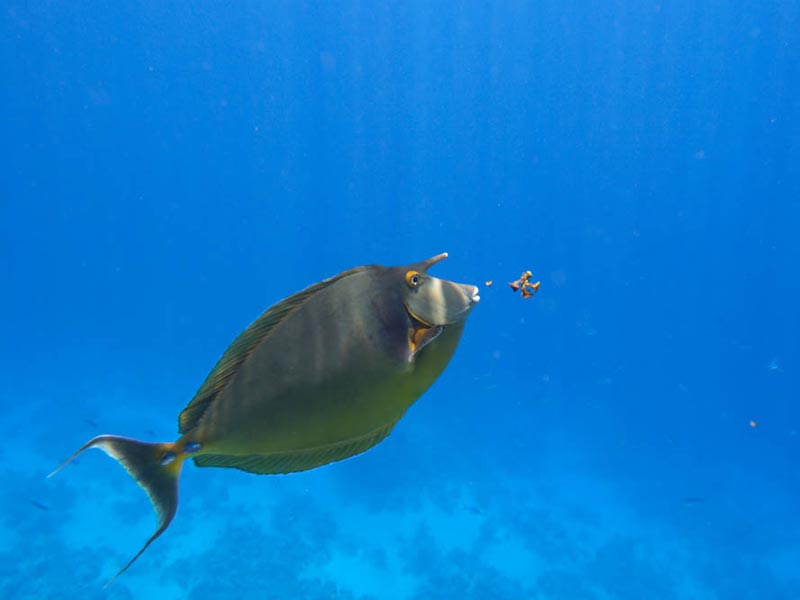Bluespine Unicornfish
kala
Naso unicornis
Of all the Hawaiian reef fish, the surgeonfish or tangs are the most plentiful and prominent. At the base of their tail fin, they have two knifelike spines or scalpels on each side. These scalpels lie flat until they are ready to fight and they can quickly flip them out, which can cause serious injury to predators or rivals. The common name "surgeonfish" was from the deep and painful cuts they can inflict on humans, usually removing them from nets or spears. The scalpels are usually brightly colored, and peaceful divers have little to fear.
Surgeonfishes are usually oval shaped with narrow and compressed bodies, and their scales are very small. They launch themselves with winglike beats of their pectoral fins. Most of the surgeonfish feed on algae, and their mouths scrape the surface of rocks and dead coral or they nibble on leafy seaweeds. Since algae grows best in bright light, most surgeonfishes enjoy the shallow waters. There are 23 species of surgeonfish in Hawaiian waters.
Unicornfish are included in the surgeonfish family, and many species grow a long horn on their forehead. They are often found in deeper water, because they tend to feed on plankton. Unicornfish has sharp bony projections on each side of their tail fin, which can cause serious injury to predators or rivals. The scalpels are usually brightly colored, and peaceful divers have little to fear. The Hawaiian name for unicornfish is "kala," which means "thorn," and someone who can defend themselves well was praised as "a kala fish with a sharp tail."
These unicornfish are plain and light colored with a long horn and fluorescent blue tail spines. The male Bluespine Unicornfish have tail streamers, and smaller specimens do not have the horn. As they graze on algae in shallow water, they often darken except for a light shoulder patch. This unicornfish is a common sight for snorkelers. In ancient Hawaiʻi, the unicornfish's tough skin was used for making drumheads. They grow up to 27 inches.
